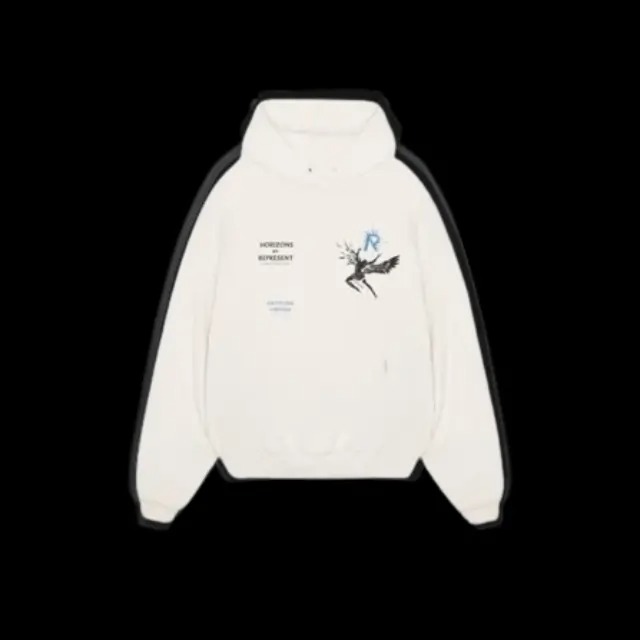Certainly! Here’s a comprehensive exploration of T-shirts, covering their history, evolution, cultural significance, fashion trends, and more.
The T-shirt: Represent Hoodie a garment so ubiquitous, so ingrained in our everyday lives that it’s easy to overlook its significance. Yet, upon closer inspection, the humble T-shirt reveals itself as a cultural touchstone, a canvas for self-expression, and a symbol of comfort and versatility. In this comprehensive exploration, we’ll delve into the rich history, evolution, and enduring appeal of the T-shirt.
### The Birth of the T-shirt:
The T-shirt as we know it today has humble beginnings. Its origins can be traced back to the late 19th century when it was primarily used as an undergarment worn by laborers, sailors, and soldiers. Its simple design, typically consisting of a crew neck and short sleeves, made it practical for work and conducive to movement.
### Cultural Shifts and Innovation:
The T-shirt underwent a significant transformation during the early 20th century, thanks to innovations in manufacturing and changes in societal norms. Represent Hoodie It gradually transitioned from an undergarment to outerwear, becoming a symbol of casual style and youthful rebellion.
### Pop Culture and Iconography:
The T-shirt’s ascent to cultural prominence was propelled by its adoption in various subcultures and movements. From the iconic white tees worn by James Dean in “Rebel Without a Cause” to the tie-dyed shirts of the hippie movement in the 1960s, T-shirts became emblematic of countercultural expression and individuality.
## Fashion and Design:
### Trends and Styles:
Over the years, the T-shirt has evolved to encompass a wide array of styles, from classic crew necks to V-necks, scoop necks, and beyond. Designers and brands have experimented Represent T Shirt with fabric blends, cuts, and embellishments to offer consumers a diverse range of options.
### Graphic Tees and Personal Expression:
One of the most enduring trends in T-shirt fashion is the graphic tee. These shirts feature bold designs, slogans, and imagery that allow wearers to showcase their interests, affiliations, and sense of humor. From band merch to political statements, graphic tees serve as wearable canvases for self-expression.
### Sustainable Fashion and Ethical Production:
In recent years, there has been a growing emphasis on sustainability and ethical production within the fashion industry, and T-shirts are no exception. Many brands are now offering eco-friendly alternatives made from organic cotton, recycled materials, or sustainable fibers, catering to conscientious consumers’ demand for ethically produced clothing.
## Cultural Impact:
### T-shirts as Cultural Artifacts:
Beyond their role as garments, T-shirts have emerged as cultural artifacts that reflect the zeitgeist of their time. They serve as souvenirs of concerts, festivals, and events, preserving memories and moments in wearable form.
### Political and Social Commentary:
T-shirts have also been used as a platform for political and social commentary, allowing individuals to express their views on issues ranging from human rights to environmental activism. Slogans like “Make Love, Not War” and “Save the Planet” have become synonymous with T-shirt activism, sparking conversations and raising awareness.
### Global Appeal and Influence:
The T-shirt’s universal appeal transcends geographical boundaries and cultural barriers. From the streets of New York City to the markets of Marrakech, T-shirts are worn by people of all ages, backgrounds, and walks of life, serving as a unifying force in an increasingly interconnected world.
## Conclusion:
In conclusion, the T-shirt stands as a testament to the power of simplicity, versatility, and self-expression. From its humble origins as an undergarment to its status as a cultural icon, the T-shirt has evolved alongside society, reflecting changing fashion trends, cultural movements, and technological advancements. Whether worn as a statement piece or a wardrobe staple, the T-shirt remains a timeless classic that continues to inspire and endure.
As we look to the future, it’s clear that the T-shirt will continue to evolve, adapt, and reinvent itself, reflecting the ever-changing landscape of fashion, culture, and society. And through it all, one thing remains certain: the T-shirt will always hold a special place in our hearts and closets, embodying the spirit of individuality, creativity, and freedom that defines us as human beings.





